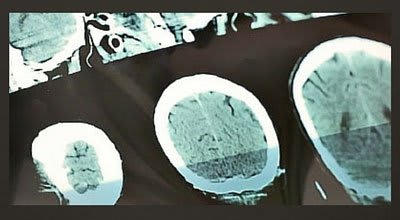By Todd Miller, MD, Neurointerventional Radiology
What are the warning signs of stroke? Call 911 if:
- Numbness or weakness of the face, arm or leg (commonly on 1 side)
- Confusion, trouble speaking or understanding
- Trouble seeing in one or both eyes
- Difficulty walking, dizziness, loss of balance or coordination
- Severe headache, neck pain or photophobia (light sensitivity) with no known cause
If a friend or loved one suddenly began to suffer from stroke symptoms, what would you do? When it comes to stroke, time is brain! That means near-immediate, “on the spot” treatment is crucial before it’s too late to reverse stroke symptoms. Ensuring that these patients get to the right hospital quickly is essential.
As a neurointerventional radiologist, I’m thrilled to be affiliated with an organization with the only facility in the region to offer 24/7 thrombectomy stroke treatment with “rapid software”, on-site neurologists, and a modern biplane x-ray suite. Biplane imaging lets doctors follow the path of blood flow to the exact location of the issue. This unique combination allows us to combine the best available tools and providers to quickly treat our patients and maximize recovery.
What happens during a stroke?
An ischemic stroke occurs when a blood vessel that delivers oxygen and nutrients to the brain is blocked by a clot. As a result, part of your brain can’t obtain the oxygen and blood it needs, leading to a very dangerous and potentially life-threatening situation. Ischemic stroke is the most common type, accounting for 87% of all strokes.*
 How is stroke most commonly treated?
How is stroke most commonly treated?
Commonly, we treat those patients with ischemic stroke with a drug called tissue plasminogen activator (tPA). Simply put, this is a drug that “busts” the blood clots causing the stroke. However, the key is to recognize the warning signs above immediately and administer the tPA up to 4 ½ hours of the stroke onset, depending on the situation.* This method of treatment can help restore blood flow to the brain and improve symptoms. But, when the larger brain vessels are blocked, IV tPA has limited success in restoring blood flow. These vessels can be re-opened quickly and safely with mechanical thrombectomy stroke techniques.
What is thrombectomy? How is thrombectomy used to treat stroke?
In simplistic terms, thrombectomy is a type of minimally invasive surgery that removes a blood clot from an artery. In the case of a stroke, a cerebral thrombectomy removes the clot from an artery in the brain. To remove the clot, we insert a catheter (a flexible tube) through an artery in the groin or arm up to the artery in the brain that’s blocked. State of the art ”stentrievers” (a device that looks like a tiny, wire-mesh tube) are used to open and trap the blood clot which allows your doctor to remove it. Thrombectomy stroke procedure is been developed and refined over the past twenty years and is now offered at Stamford Health.
Using Artificial Intelligence software called Rapid, we’re able to provide a near- immediate analysis of brain images taken when you arrive in the emergency room in order for our team to make the best decision and select the right patients to treat with thrombectomy.
What criteria must someone meet for thrombectomy stroke treatment?
Thrombectomy treatment is best for patients suffering from a major stroke with a large vessel occlusion (ischemic strokes). The treatment is safe and effective when performed for patients before the area of brain at risk is irreversibly injured. We use Rapid software to help us analyze the brain and make this decision. The treatment can be provided 6, 8, 24, or more hours after symptom onset in appropriate patients!
How can you prevent a second stroke?
- Adopt healthier lifestyle habits. This may mean making a commitment to quit smoking or incorporating an exercise routine into your schedule and adopting a healthy diet.
- Have your blood pressure checked, and talk with your doctor about ways to reduce your blood pressure if it is elevated
- Properly managing your atrial fibrillation—if you have it—with your cardiologist.
*Source cited: American Stroke Association
Featured Expert/ Author









